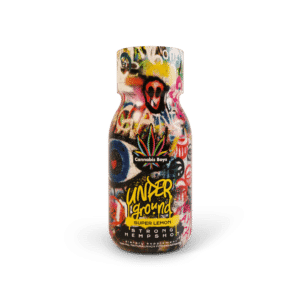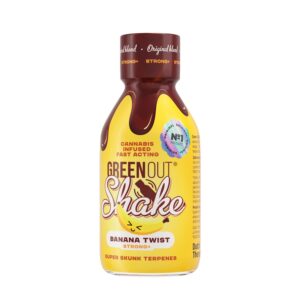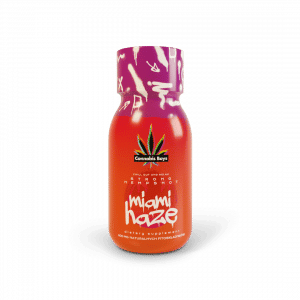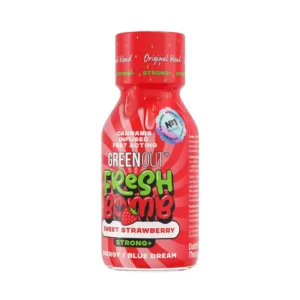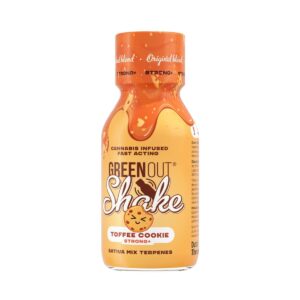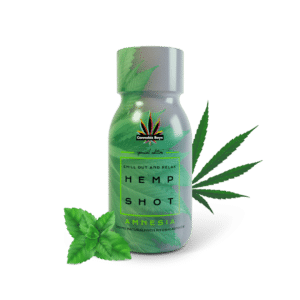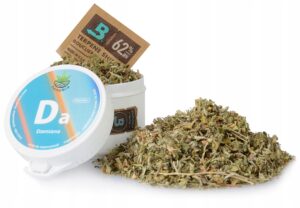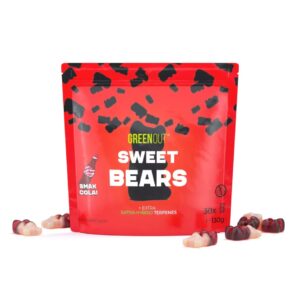Inventory of terpenes
Hemp terpenes are aromatic oils that can be found in all plants. They are responsible for the distinctive smell and taste of hemp, and have an important role to play in the effects they have on the plants.
Hemp contains about 100 different terpenes, and those that are most concentrated are geraniol, myrcene and limonene.
Terpenes have medicinal effects and can aid in the treatment many ailments. Geraniol is a powerful antioxidant and can help fight cancer.
Myrcene has antibacterial and antifungal properties, and also helps to soothe the inflammations. Limonene is considered a powerful antiseptic and helps in the treatment of Skin problems such as acne.
Terpenes are also responsible for hemp's effects on the nervous system.
Myrcene has a calming effect and can help treat anxiety and depression. Geraniol and limonene have a stimulating effect and can improve mood. Terpenes are also considered strong antibacterial and antifungal agents.
Terpenes are also important for humans because they can affect how cannabinoids (such as THC and CBD) interact with the body. Specifically, terpenes can increase or decrease the psychoactive potential of cannabis. In addition, terpenes have medicinal properties and can be used to alleviate many ailments, such as pain, stress and insomnia.
In summary, terpenes are chemical compounds that are present in cannabis and have a wide range of benefits for both plants and humans. Terpenes can affect how cannabinoids work and also have medicinal properties. For this reason, terpenes are considered an important part of hemp and its future as a medicine.
Terpenes, or ichthyols, are organic compounds found in hemp.
They are included in the group of plant essential oils. Their main function is to protect plants from pests and diseases, as well as affect their taste and aroma. In addition, terpenes have medicinal properties, and their presence in cannabis may influence how cannabinoids work.
There are more than 200 different terpenes found in hemp, and each has its own unique properties. For this reason, it can be difficult to create one hemp medicine for all ailments. Instead, doctors may recommend patients to use different combinations of terpenes depending on the symptoms they have.
Clinically, terpenes have been studied for their effects on memory, depression, anxiety, insomnia, as well as pain and inflammation. The results of these studies are promising, and further research could lead to the development of new cannabis drugs based on terpenes.
Studies have shown that the cannabinoids and terpenes of a particular strain of cannabis allow the consumer to predict the experience they may have - either stimulant or sedative - along with other therapeutic effects. In the case of cannabis, the two most popular are delta-9-tetrahydrocannabinol (THC) and cannabidiol (CBD). THC is responsible for the "high," while CBD does not produce this effect.
However, it is worth remembering that there are many other hemp terpenes that have their own unique properties and can affect the consumer experience.
Below is an overview of some of these terpenes:
1. Linalool
Linalool is An organic chemical compound, an unsaturated aliphatic alcohol, belonging to the terpene group. It has a fragrance similar to bergamot or lavender oil. It is a mixture of two stereoisomers: coriandrol and likareol.
Linalool occurs naturally in more than 200 species of plants, including lavender, bergamot, mint, lily of the valley, jasmine, rose, geranium, lemon, orange, tangerine, grapefruit, ginger, coriander, basil, sage, oregano, marjoram, rosemary, thyme, eucalyptus, menthol, camphor, sandalwood, patchouli, pink wood and many others.
Linalool is used in a wide variety of products, including:
- cosmetics, such as perfumes, creams, shampoos and lotions
- cleaners and disinfectants
- medications, such as tranquilizers, antidepressants and anti-anxiety drugs
- food and beverages
- aromatherapy
Linalool has a number of properties, including:
- fragrant
- antibacterial
- antifungal
- reassuring
- antidepressant
- anti-anxiety
- anti-inflammatory
- antioxidant
Linalool is considered safe for most people, but can cause allergic reactions in some people.
Here are some of the specific uses of linalool:
- In cosmetics, linalool is used for its fragrance and antibacterial properties. It is often used in perfumes, creams, shampoos and lotions.
- In cleaning and disinfecting products, linalool is used as an antibacterial and antifungal agent. It is often used in soaps, detergents, dishwashing liquids and other cleaning products.
- In medicines, linalool is used as a sedative, antidepressant and anti-anxiety agent. It is often used in medications for insomnia, depression and anxiety.
- In food and beverages, linalool is used as a flavor. It is often used in ice cream, candy, soft drinks and other food products.
- In aromatherapy, linalool is used to relieve stress, improve mood and enhance sleep. It is often used in inhalations, massages and other aromatic therapies.
2. Limonene
Limonene is an organic chemical compound, an unsaturated aromatic hydrocarbon, belonging to the terpene group. It has an odor similar to lemon or orange oil. It is a mixture of two stereoisomers, D-limonene and L-limonene.
Limonene occurs naturally in more than 300 plant species, including citrus, rosemary, mint, celery, and pistachios. It is the most common terpene, accounting for about 1% by weight of all plants.
Limonene is used in a wide variety of products, including:
- cosmetics, such as perfumes, creams, shampoos and lotions
- cleaners and disinfectants
- medications, such as antibacterial and antifungal drugs
- food and beverages
- aromatherapy
Limonene has a number of properties, including:
- fragrant
- antibacterial
- antifungal
- anti-inflammatory
- antioxidant
Limonene is considered safe for most people, but can cause allergic reactions in some people.
Here are some of the specific uses of limonene:
- In cosmetics, limonene is used for its fragrance and antibacterial properties. It is often used in perfumes, creams, shampoos and lotions.
- In cleaning and disinfecting products, limonene is used as an antibacterial and antifungal agent. It is often used in soaps, detergents, dishwashing liquids and other cleaning products.
- In medicines, limonene is used as an antibacterial and antifungal agent. It is often used in medicines for bacterial and fungal infections.
- In food and beverages, limonene is used as a flavor. It is often used in ice cream, candy, soft drinks and other foods.
- In aromatherapy, limonene is used to relieve stress, improve mood and enhance sleep. It is often used in inhalations, massages and other aromatic therapies.
In cannabis, limonene is one of the most common terpenes, the content in the essential oil fraction reaches as high as 16%. It is responsible for the characteristic citrus smell of marijuana. Limonene exhibits anti-inflammatory, antioxidant and antibacterial properties. It can also help relieve stress and improve mood.
3. Humulen
Humulene is an organic chemical compound, a terpene belonging to the group of monoterpenes. It has an odor similar to woody, spicy and earthy. It is a mixture of two stereoisomers: α-humulene and β-humulene.
Humulene occurs naturally in many plants, including hemp, hops, ginger, cloves, basil, sage and oregano. It is the main component of hop oil, which is used in beer production.
Humulene exhibits a number of properties, including:
- anti-inflammatory effect
- antibacterial action
- antifungal action
- antioxidant activity
- anticancer effects
Humulen can be used to treat a variety of conditions, including:
- arthritis
- bacterial infections
- fungal infections
- cancers
In cannabis, humulene is found in concentrations ranging from 0.5% to 2%. It is responsible for the characteristic woody, spicy and earthy smell of marijuana. Humulene exhibits anti-inflammatory, antibacterial and antifungal properties. It can also help relieve stress and improve mood.
Here are some of the specific uses of humulene:
- In medicines, humulene is used as an anti-inflammatory, antibacterial and antifungal agent. It is often used in medications for arthritis, bacterial infections and fungal infections.
- In cosmetics, humulene is used for its fragrance and anti-inflammatory properties. It is often used in perfumes, creams, shampoos and lotions.
- In food and beverages, humulene is used as a flavor. It is often used in ice cream, candy, soft drinks and other food products.
Humulene is considered safe for most people, but can cause allergic reactions in some people.
4. α-Pinen
α-Pinene is an organic chemical compound, a terpene belonging to the monoterpene group. It has an odor similar to pine. It is a mixture of two stereoisomers: (+)-(1R,5R)-α-pinene and (-)-(1S,5S)-α-pinene.
α-Pinene occurs naturally in many plants, including pine, fir, cypress, juniper, mint, sage, oregano, rosemary and thyme. It is the main component of pine oil, which is used in aromatherapy.
α-Pinene exhibits a number of properties, including:
- anti-inflammatory effect
- antibacterial action
- antifungal action
- antioxidant activity
- anticancer effects
α-Pinene can be used to treat a variety of conditions, including:
- arthritis
- bacterial infections
- fungal infections
- cancers
In cannabis, α-pinene is found in concentrations ranging from 0.5% to 2%. It is responsible for the characteristic smell of marijuana pine. α-Pinene exhibits anti-inflammatory, antibacterial and antifungal effects. It can also help relieve stress and improve mood.
Here are some of the specific uses of α-pinene:
- In medicines, α-pinene is used as an anti-inflammatory, antibacterial and antifungal agent. It is often used in medications for arthritis, bacterial infections and fungal infections.
- In cosmetics, α-pinene is used for its fragrance and anti-inflammatory properties. It is often used in perfumes, creams, shampoos and lotions.
- In food and beverages, α-pinene is used as a flavor. It is often used in ice cream, candy, soft drinks and other food products.
α-Pinene is considered safe for most people, but can cause allergic reactions in some people.
5. β-Myrcene
β-Myrcene is a terpene that is also present in lavender and cloves. It is considered a sedative, helping with sleep problems and anxiety.
6. α-Bisabolol
α-Bisabolol is a terpene that is also present in chamomile. It has antibacterial and antiseptic properties, and soothes inflammation.
7. δ-Limonene
δ-Limonene is a terpene that is also present in citrus. It is considered an anti-inflammatory and antiseptic, and also helps in treatment of headaches and migraines.
8. Linalool
Linalool is a terpene that is also present in lavender flowers. It is considered a sedative and helpful in treating anxiety and depression.
9. α-Pinene
α-Pinene is a terpene that is also present in pine. It is considered an anti-inflammatory and helpful in treating asthma and hay fever.
10. Humulene
Humulene is a terpene that is also present in hops. It is considered an antimicrobial and antiseptic.
11. β-Caryophyllene
β-Caryophyllene is a terpene that is also present in cloves. It is considered an anti-inflammatory and helpful in treating stomach and duodenal ulcers.
12. γ-Terpinene
γ-Terpinene is a terpene that is also present in lavender and sage. It is considered an antibacterial, antiseptic and decongestant.
13. Selinene
Selinene is a terpene that is also present in dill. It is considered an antibacterial agent and helpful in treating gastrointestinal ailments.
14. α-Terpinene
α-Terpinene is a terpene that is also present in citrus. It is considered an antimicrobial, antiseptic and decongestant.
15. Phellandrene
Phellandrene is a terpene that is also present in mint and anise. It is considered a powerful antibacterial and antiseptic.
16. α-Terpineol
α-Terpineol is a terpene that is also present in lavender and sage. It is considered an antimicrobial and decongestant.
17. Terpinolene
Terpinolene is a terpene that is also present in mint and anise. It is considered a powerful antibacterial and antiseptic.
18. α-Humulene
α-Humulene is a terpene that is also present in hops. It is considered an antimicrobial and decongestant.
19. β-Caryophyllene
β-Caryophyllene is a terpene that is also present in cloves and coriander. It is considered an antimicrobial and decongestant.

